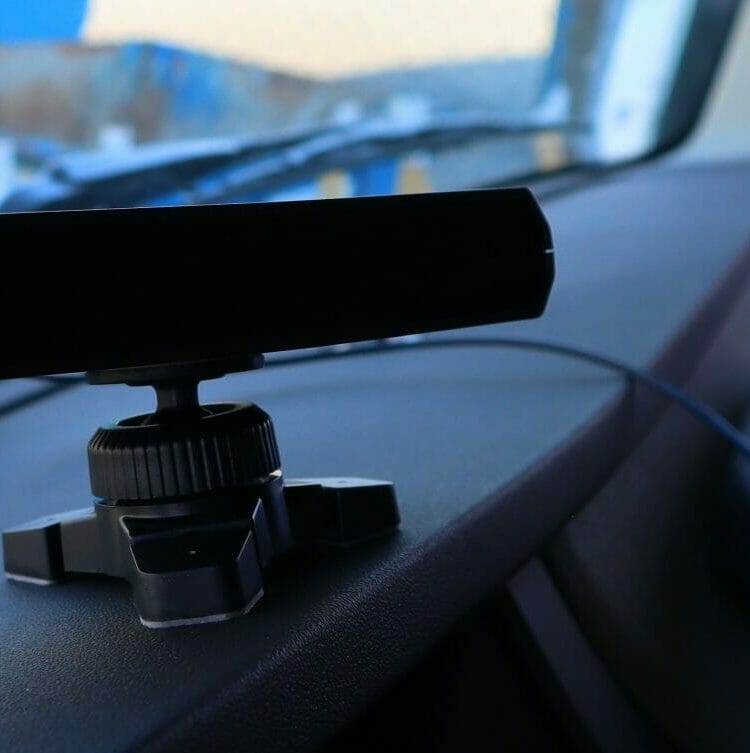EN



Smart Eye is recognized in the automotive industry as a leading provider of advanced and reliable in-cabin safety technology. But until recently, Smart Eye’s AI-powered Driver Monitoring System (DMS) software was not available to all vehicles, or an accessible option for all manufacturers.
After being approached by fleet operators to make this technology available for fleet vehicles, we started development on AIS: a system that would offer an ideal solution for fleets and vehicle manufacturers producing smaller volume.
In an unparalleled combination of advanced artificial intelligence and flexibility, AIS pairs our leading software with automotive-qualified hardware – developed in-house to work perfectly with our AI algorithms. The result is a cutting-edge in-cabin safety system – made to prevent fleet accidents and improve road safety.
In this blog, we dive into the unique advantages AIS offers fleet vehicles and small-volume car manufacturers – and how the benefits of an advanced DMS actually go beyond safety. From legislation compliance and cost avoidance to improved sustainability, these are some of the most important reasons to implement AIS in your vehicles:
Distracted driving is the number one cause of preventable fleet crashes, followed closely by driver fatigue. Long-haul drives and night shifts can make commercial drivers especially prone to fatigue and distraction, and can also lead to dangerous behavior such as phone use. AIS improves road safety by effectively detecting distraction, drowsiness, and dangerous behavior – preventing crashes by alerting the driver at the earliest possible point.
All over the world, the implementation of DMS is fueled by legislators and influential organizations. For example, the EU and the US are in different stages of implementing regulations that require the use of driver monitoring systems for preventing driver distraction and drowsiness.
In Europe, the European Union’s General Safety Regulation (GSR) require all motor vehicles with four or more wheels, including personals cars, trucks and buses, to be equipped with Advanced Driver Distraction Warning (ADDW) and an interface for an alcohol interlock device from July 7, 2026. But as early as July 7, 2024, the regulations will apply to all new types of vehicles. In addition to this, the latest update of Euro NCAP’s assessment protocol, implemented in January 2023, requires DMS for a car model to receive a five-star safety rating.
Across the Atlantic, things seem to be moving in a similar direction. In 2021, the US Congress passed a broad $1.2 trillion infrastructure bill, including a mandate that new cars will have DMS technology that detects alcohol impairment starting in 2026. This requirement will likely extend to new trucks and buses as well.
So, as mandatory implementation of DMS is just around the corner in many parts of the world, pressure is increasing on vehicle manufacturers to adopt these systems – and fast. As a result, many OEMs do not have the time or resources to carry out the often-extensive platform updates necessary to install other DMS solutions in their vehicles. Instead, they need a highly accurate off-the-shelf system, such as Smart Eye’s AIS.

Road accidents can cause some pretty significant financial loss to fleet operators and companies. A fleet accident can cost a company anywhere from $16,000 to $75,000, even if it’s minor and no one’s hurt. If there’s a fatality involved, that number skyrockets. By preventing road crashes, AIS can also help avoid the direct and indirect costs that come with an accident. And thanks to a reduced risk of accidents, DMS can also lead to reduced insurance fees for fleet companies – and lower costs for insurance companies.
If a vehicle transporting hazardous goods end up in a road crash, it can have some very serious consequences for the environment. By preventing traffic accidents involving hazardous cargo we may avoid environmental disasters, such as contamination that harms humans and surrounding ecosystems alike.
Alerts from the DMS system can be used to help coach drivers and correct driving behaviors in real time. When an event is triggered, alerts from the system provide drivers with instantaneous feedback on their behavior, allowing them to quickly recognize and correct it.
By merging the complexity and accuracy of Smart Eye’s algorithms with the flexibility of a true plug-and-play system, AIS represents another important step towards elevating road safety – this time focusing on fleet vehicles and cars produced in smaller volumes.
But AIS is not merely a safety net. While initially developed to combat distracted driving and fatigue, the benefits of AIS stretch well beyond road safety – ensuring compliance with global regulations, curbing costs, and fostering responsible driving.
By offering real-time feedback and promoting responsible driving behavior, AIS also helps promote a safety-focused culture within fleets. Fleets play a crucial role in the evolving automotive landscape, and these in-cabin systems will continue to be essential safety features as sensors and algorithms become integral to all future vehicles.
Learn more about AIS or contact us today to request a demo of the system.
– Blog Series: How the EU is Making Driver Monitoring Systems (DMS) Mandatory on European Roads
– eBook: Fit to Drive? 5 Key Insights into the State of Intoxicated Driving Research
– Blog: How Driver Monitoring Systems (DMS) Are Essential to Managing Fleets’ Financial Risks
– eBook: How Euro NCAP Will Make DMS the New Safety Standard
– Blog: Enhancing Fleet Safety: The Role of Driver Monitoring Systems (DMS)
